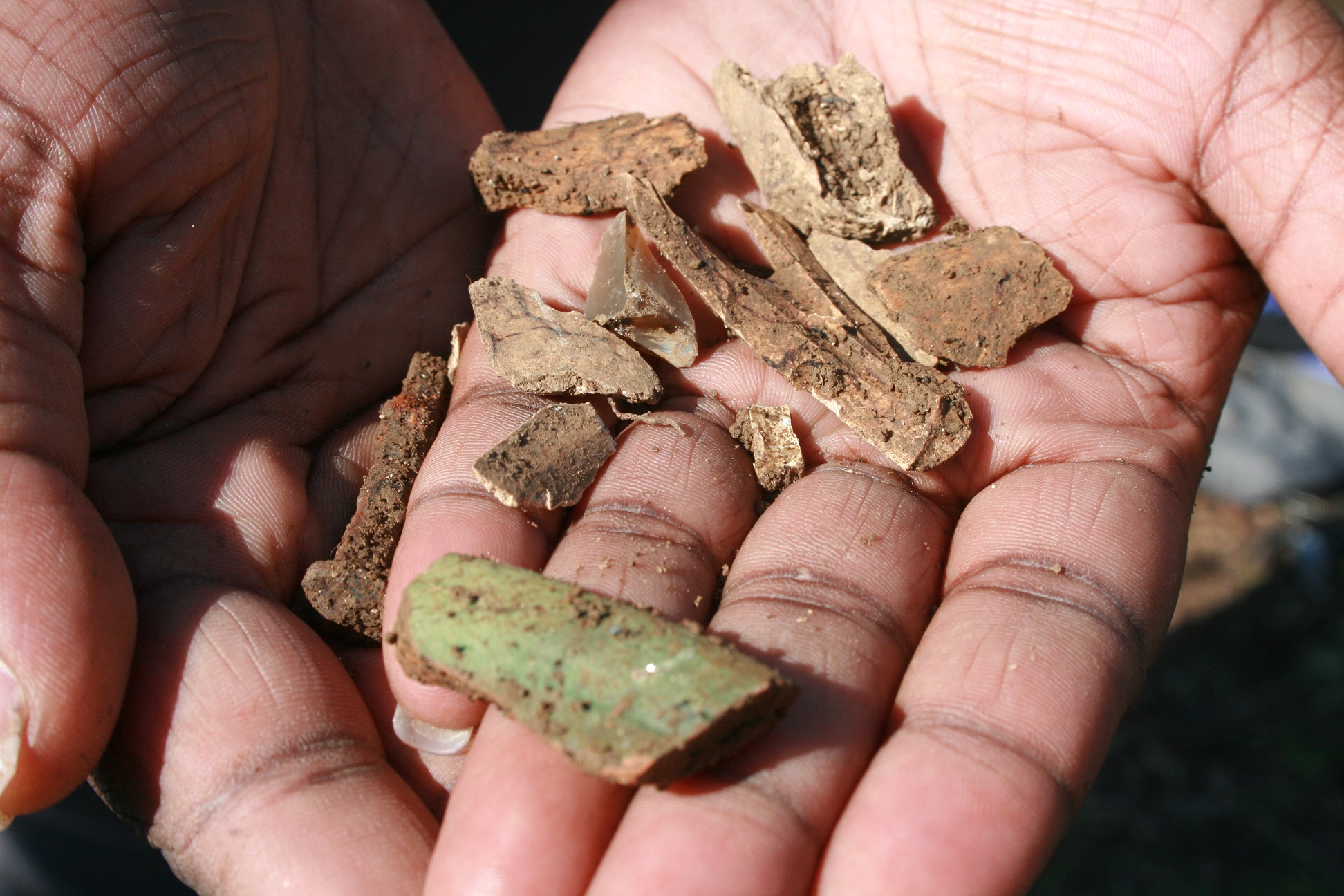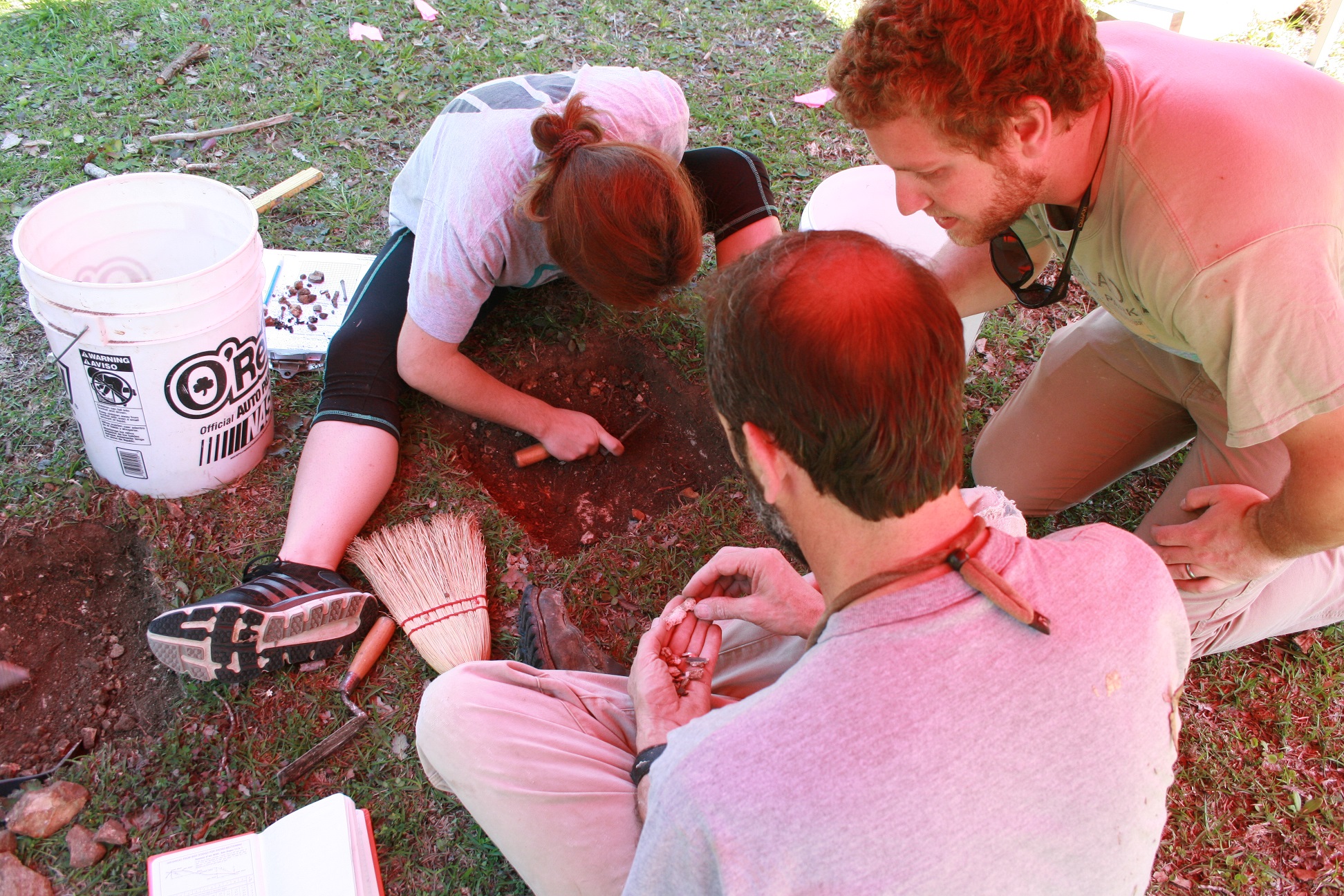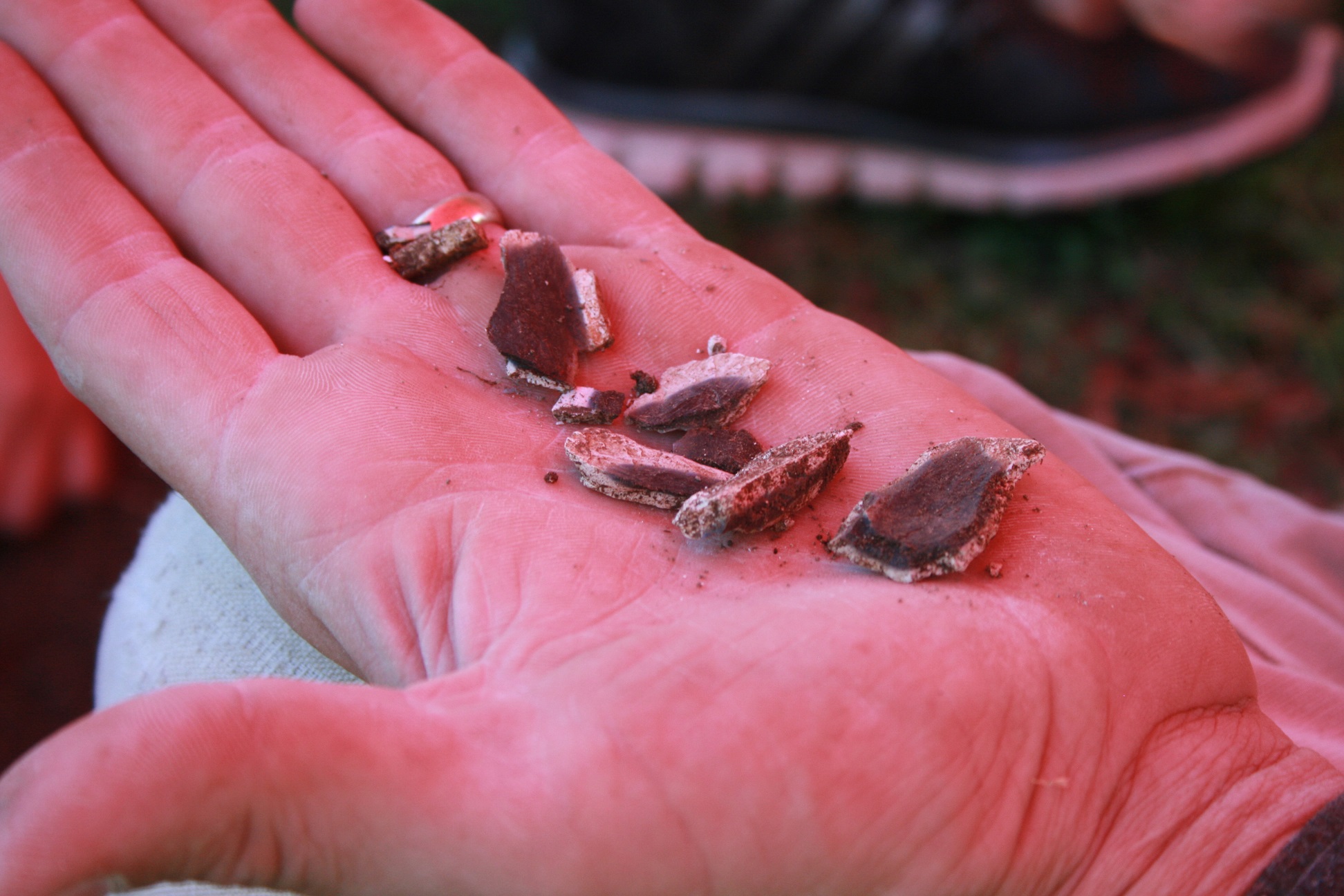by Natalie Mooney
Hello Readers,
Fort Tombecbe has had an exciting week this week as many artifacts have
been discovered during the week. Work has continued on Panel holes 12, 13, 14
and each panel hole has revealed a plentitude of artifacts. On Thursday, we
also had the illustrious Tim Truelove and Professor Lamb visit the site in
order to proceed with the placing of the panels.
In Valencia’s unit, Panel Hole 12, where she has excavated to Layer C, she has
discovered what we believe to be a French midden as there are many different
artifacts including ceramics, nails, and the prevalent type of artifact in her
unit--bone. It is interesting to note that there may be a midden in this
location as the unit itself is located in between the Commandant’s Quarters,
the Troop Kitchen, and the Barracks. (A midden is any accumulation of artifacts
resulting from human activities in a particular location.) The photo below shows a sample of the artifacts from this midden.

Panel Holes 18 and 19 were placed next to the cliff overlooking the
Tombigbee River. We had originally speculated that there would not be a lot to
dig in that location as it was so far out on the bluff. We were proven wrong
quite quickly as Dr. Dumas uncovered the orange clay that is present throughout
many of our units throughout the fort and was part of an eighteenth-century
filling and levelling activity. Strangely enough this panel hole goes much
deeper than Panel Hole 10, where we had also found the clay. This signifies once again the tremendous
efforts that went into creating the fort’s level area.
Skyler and I were assigned to begin excavating Panel Holes 13 and 14.
This panel is titled “Life at the Fort” and describes the living conditions of
the garrison at Fort Tombecbe. These panel holes are located in the general
vicinity of the Commandant’s Quarters and the Commandant’s Kitchen. As we began to excavate the first layer we
were extremely aware of the very dense and compacted dirt. This layer held few
artifacts, but was hard to dig through. In the next layer, we discovered a
layer of chalk rubble covering the entire unit. This rubble was similar to what
we were seeing throughout the fort, but it was much higher up. This layer was
filled with tons of artifacts. In my particular unit, Panel Hole 14, I found
charcoal, ceramic, mortar, and lots of nails. There was one nail that was
standing straight up, which indicates that there was disturbance to the midden in
this area. This is known because when buildings decay or rot artifacts are left
laying on their sides, which is how most artifacts are found. When an artifact
like this is found, then that means a person or animal came and intervened in
some way to alter the resting position of the artifact. The mortar signifies
that a building was located in our general vicinity, which makes sense when
looking at the maps of Fort Confederation. I have to admit, I made a mistake
this week. It is a valuable learning point, however, so learn from my mistakes.
In the absolute center of my unit I was hacking away at the chalk trying to get
through this layer efficiently, when Dr. Dumas noticed a piece of what we
thought was natural that had a significant burn mark. I saved it to the side
and then Professor Lamb walked over to view what we were doing and he
discovered that it was a very large pipe bowl, hence the burn marks. This is
one of the reasons why archaeology is supposed to be done slowly and carefully.
Had I excavated as I am supposed to, the pipe bowl would still be in one piece.
I cannot stress enough how important that this lesson should be to all incoming
field school students. If you are not sure what something is pedestal the
object and excavate it carefully. Everyone makes mistakes, but if you are
conscious as to what you are doing mistakes will be minimized.
The photos below show the careful excavation of the clay pipe pieces by me, with James Lamb and Tim Truelove looking on, and a closer photo of some of the pipe pieces, showing sooting on the interior. 

In Panel Hole 13, Skyler was getting through the chalk without finding
nearly as many artifacts as I was. As he began to get deeper, and Thursday
began to come to a close, more artifacts began appearing. One of the more
interesting finds was a small, metal panel (about one inch wide by two inches
long) that had rivets within it. I would expect on our return after Spring
Break that he will discover many more artifacts.
As I mentioned earlier, the week of March 27-31 is the University of
West Alabama’s Spring Break so there will be no excavations done that week. So
thank you for your continued interest in the affairs of the 2017 Fort Tombecbe
Field School.